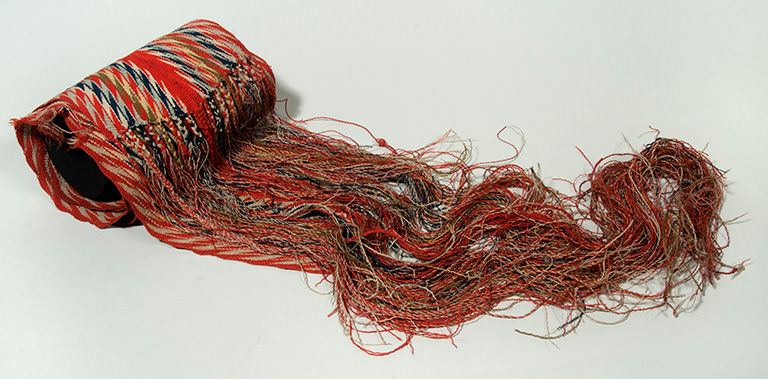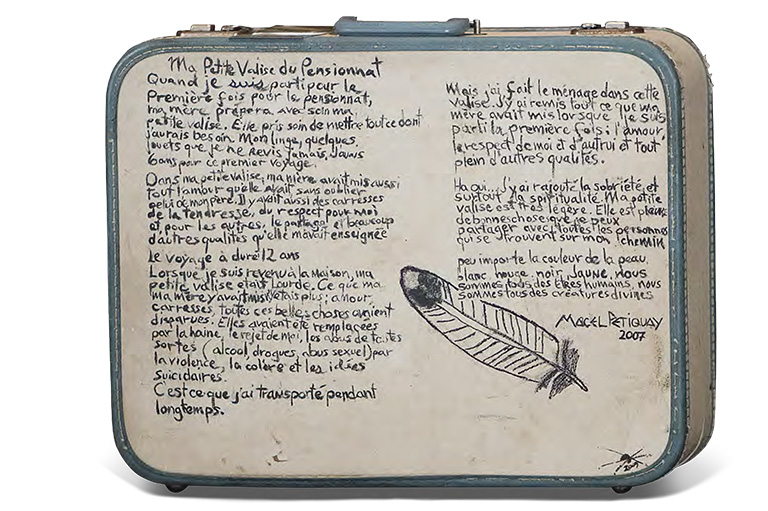Arrowhead Sash

The origins and development of the arrowhead sash have long been the subject of debate. Historians generally agree that this type of sash was invented by French Canadians who employed a finger-weaving technique derived from both Indigenous and French traditions.
This functional accessory was widely adopted by French Canadians: It held their winter coats tightly closed and served as a lumbar support during the transportation of heavy loads. Indigenous and Métis people adopted it for aesthetic reasons — the sash was a marker of social prestige — as well as for practical purposes.
In the nineteenth century, the arrowhead sash became a marker of French-Canadian and Métis cultural identity. During the uprisings of 1837–38 in Lower Canada, French Canadians demanding greater political autonomy wore the sash as a nationalist symbol. Similarly, Métis leader Louis Riel and his followers wore arrowhead sashes during the Red River Resistance of 1870 and the Northwest Resistance of 1885.
This sash belonged to Jean-Baptiste Lagimodière (or Lagimonière), grandfather of Riel and one of the first French-Canadian settlers in the Northwest.
Lagimodière, who travelled frequently for the Hudson’s Bay Company, fostered the Red River Settlement by providing supplies for the growing colony. His belt bears the distinctive Assomption motif — an arrowhead pattern in the centre flanked by lightning-bolt patterns on either side. Named after a community on Rivière L’Assomption northeast of Montreal, the sash was probably made in the first half of the nineteenth century.
With 7 uniquely curated newsletters to choose from, we have something for everyone.
Canada's History magazine was established in 1920 as The Beaver, a Journal of Progress. In its early years, the magazine focused on Canada's fur trade and life in Northern Canada. While Indigenous people were pictured in the magazine, they were rarely identified, and their stories were told by settlers. Today, Canada's History is raising the voices of First Nations, Métis and Inuit by sharing the stories of their past in their own words.
If you believe that stories of Canada’s Indigenous history should be more widely known, help us do more. Your donation of $10, $25, or whatever amount you like, will allow Canada’s History to share Indigenous stories with readers of all ages, ensuring the widest possible audience can access these stories for free.
Any amount helps, or better yet, start a monthly donation today. Your support makes all the difference. Thank you!
Themes associated with this article
Advertisement
More objects from 50 Merveilles

This special issue of Histoire Canada highlights beautiful treasures from Franco-Canadian communities across Canada. Available in French only.







